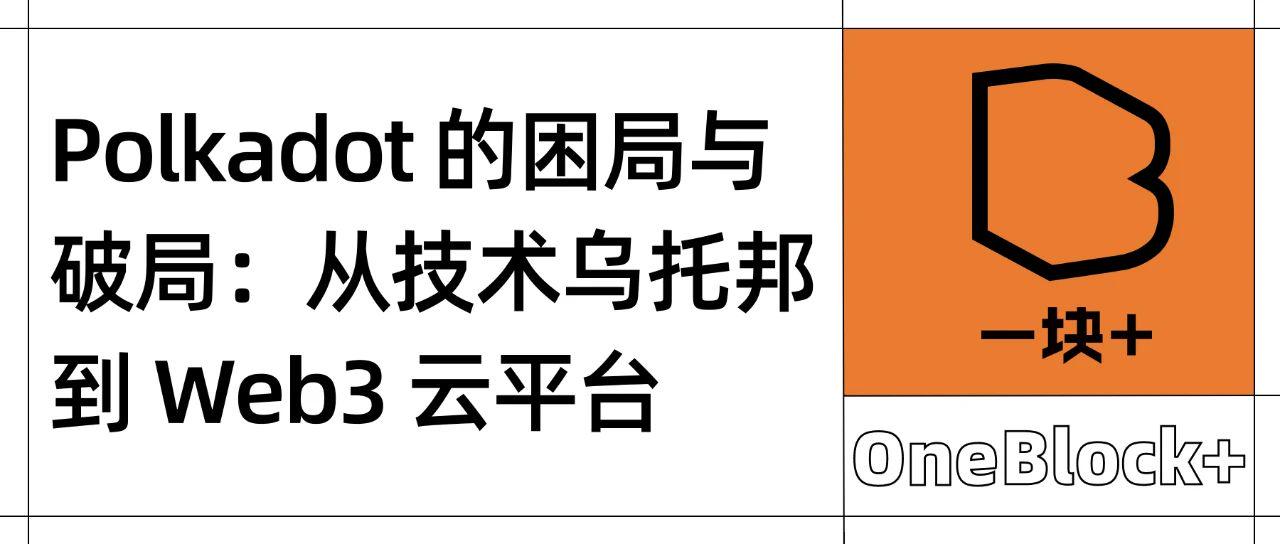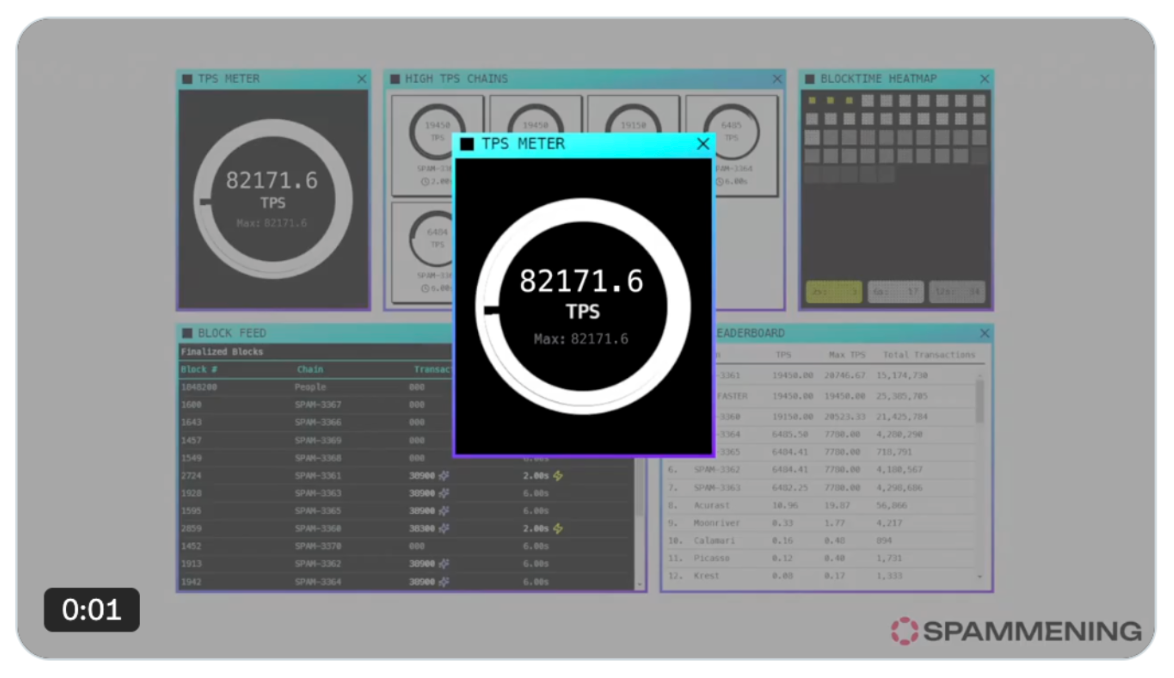
In the past few years, Polkadot has been the most "overestimated technology and underestimated market" in the crypto world.
Under the genius architectural design of Gavin Wood, founder of Polkadot, Polkadot 1.0 perfectly interprets the vision of multi-chain parallelism and shared security:
Parallel chains under the Substrate framework can be flexibly plugged in and out and quickly upgraded
XCM cross-chain protocol realizes the liquidity of inter-chain assets
Kusama's network performance test data is even more impressive, with TPS reaching 82,000+, far exceeding the most popular Solana and Monad
The monthly transaction volume of the ecosystem has tripled year-on-year, and the developer activity ranks among the top three in the industry...

These data once made Polkadot a place of faith for technical people.
But the problem is - it's not popular 😅
Technology wins, market remains silent
Even with leading technology, Polkadot has not yet produced a truly “hot application” or 100x coin (perhaps Moonbeam was once a 100x success story?). The high threshold for slot auctions, complex user experience, long lock-up period, and poor liquidity of ecological funds have all deterred end users and DeFi projects.
Users don’t care how elegant your technical architecture is; they only care about how fast the transfer is, how expensive the transaction fee is, and whether the currency price will rise.
Polkadot's governance decentralization ranks first in the industry, with a Nakamoto coefficient of 148. However, when the ecosystem lacks momentum, this extreme democracy may also become an obstacle to efficiency.
So, Polkadot 2.0 came on the scene - this is not a simple version upgrade, but a strategic reshaping.
JAM: Make Polkadot the “computing engine” of the blockchain world
The launch of JAM marks that Polkadot is evolving from a multi-chain network to a “decentralized Web3 cloud”.
Gavin Wood made it clear that JAM is not a smart contract system in the traditional sense, but a general platform that can run conventional software and has large-scale computing capabilities. It makes Polkadot no longer just a "collection of chains", but an underlying computing layer that supports the operation of high-load DApps and more modules of Web3 in the future.
This is a qualitative change: from "communication between chains" to "on-chain computing center".
Full-chain technology upgrade: Collaboratively build a Web3 cloud operating system
The upgrade of Polkadot 2.0 is not a partial functional upgrade, but a systematic reconstruction:
Smart Contract and Virtual Machine Upgrade
Asset Hub introduces EVM compatibility, supports Solidity contract deployment, and directly targets the Ethereum ecosystem. Hardhat can be used to deploy UniSwap V2 on Polkadot.
Polkadot Virtual Machine (PolkaVM) is based on the lightweight RISC-V architecture, providing a faster and more secure contract execution environment, helping to attract Ethereum developers to migrate at low cost and accelerate the implementation of DeFi and NFT applications.
Comprehensively improved scalability
Elastic Scaling enables multi-core parallel processing, dynamically allocates on-chain computing power on demand, and supports high concurrency and high throughput.
The XCM v5 upgrade improves the efficiency and security of cross-chain communication, and the unified address format greatly optimizes the user operation experience.
User experience optimization
Fast Unstaking shortens DOT unlocking time and enhances fund liquidity.
As a universal fee token, DOT simplifies the user transaction process and lowers the participation threshold.
Developer-friendly toolchain
JAM SDK provides an efficient toolset to lower the barrier to building scalable services.
Omni Node realizes unified node management to ensure ecological consistency and stable operation. This kind of all-round node is like a "family bucket node", and you don't need to reinvent the wheel from the template every time. Because it can "build-in" support for a bunch of common functions, such as EVM (Frontier), custom RPC , custom database (for example, support for EVM-specific database), etc.
Security and privacy are equally important
SAFROLE technology combines with zkSNARK to improve privacy protection and block security, providing a trust foundation for building high-value applications. It can be understood as a block production system with anonymity protection function and stronger anti-fork ability.
All of this points to a unified goal: to build Polkadot into the AWS of Web3 - to provide developers with a highly programmable, extremely scalable, cross-chain, secure and private computing platform.
Back to the market, technology is not the end, speculation is the detonator of traffic
Don’t forget that what really ignites the ecosystem is not the TPS of the public chain, but the money-making effect.
The full chain upgrade of Polkadot 2.0 actually laid a solid foundation for the "speculative market" (I guess):
Improved liquidity + fast unbinding = more agile capital efficiency
Cross-chain optimization + EVM compatibility = lower project migration costs
Security enhancement + high-performance VM = more reliable DeFi infrastructure
Flat-fee token + simplified UX = better user retention
What does this mean? Future popular DApps, liquidity protocols, GameFi, and AI modules can all be quickly incubated, iterated, and amplified on Polkadot.
All of this will directly feed back into the revaluation of DOT.
It’s not that no one understands Polkadot, it’s that it hasn’t made it clear who it is
Once upon a time, Polkadot was a utopia for technical idealists, but it seemed out of place in the red ocean of Web3. But now, Polkadot 2.0 is trying to tell a brand new story: from a "multi-chain network" to a "decentralized cloud platform."
It no longer pursues "out-of-the-box projects", but builds underlying computing facilities that "can support the entire Web3 application ecosystem". Just like AWS to Web2, when the infrastructure is strong enough, it is only a matter of time before the ecosystem prospers.
So, rather than saying that Polkadot 2.0 is an upgrade, it is more like a belated self-revolution.
This is not a reboot, but a real start-up.
Disclaimer: The materials provided by PaperMoon and included in this article are for educational purposes only. They do not constitute financial or investment advice and should not be interpreted as guidance for any business decision. We recommend that readers conduct independent research and consult with professionals before making any investment or business-related decisions. PaperMoon assumes no liability for any actions taken based on the contents of this article.












